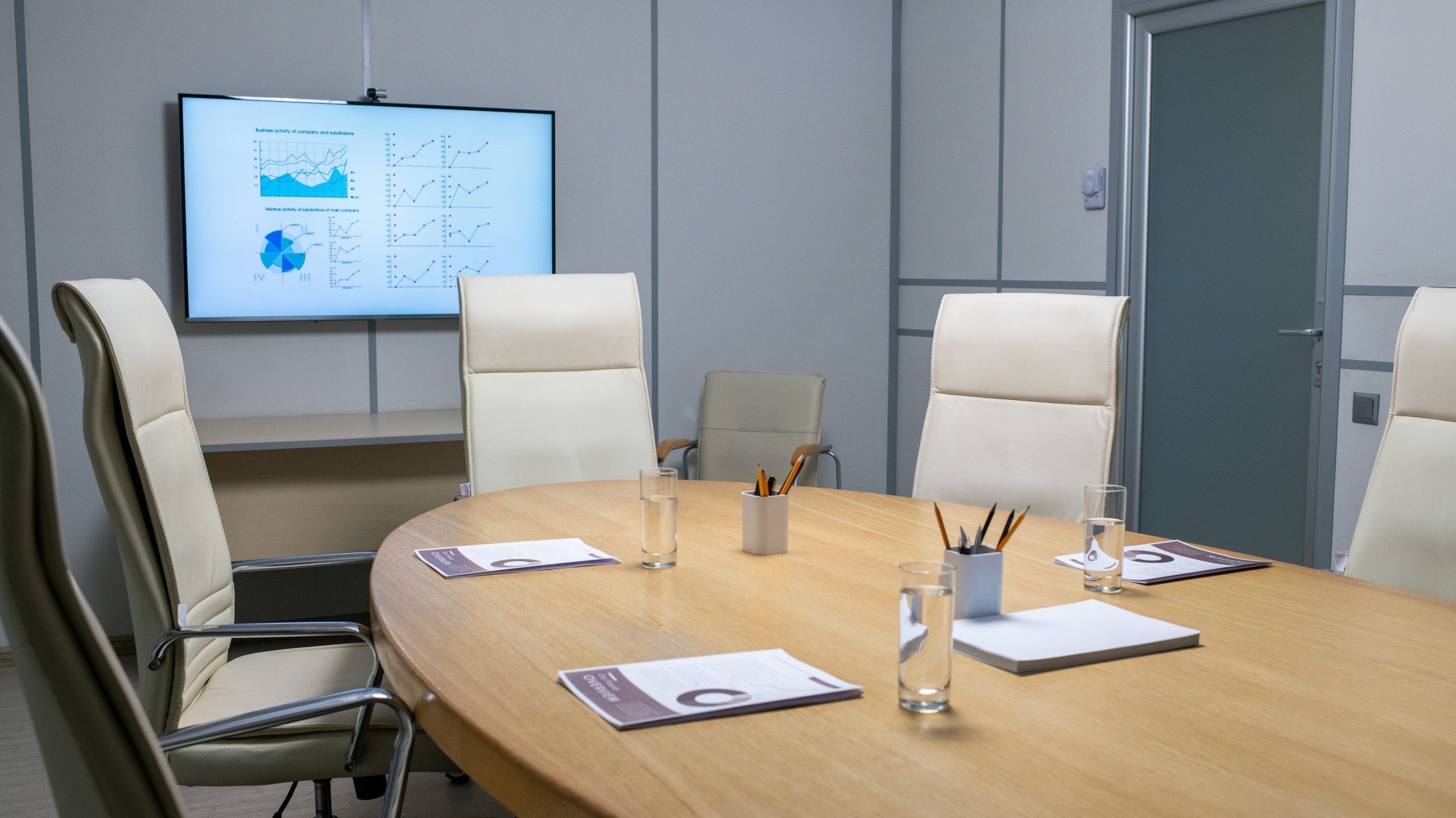
The shape of a conference table influences much more than aesthetics. It defines seating capacity, interaction, visibility, and even how technology integrates into the space. Choosing the right conference table shapes ensures your meeting room supports collaboration and leaves a lasting impression. This guide explains which shapes work best for different room sizes and purposes.
Always measure your meeting space first. A conference table should leave at least three feet (90 cm) of clearance around the edges so participants can pull out chairs and move comfortably.
Each person typically needs 24–30 inches of table edge. Your chosen shape affects how many participants can fit without feeling crowded.
Formal board meetings, creative brainstorms, training sessions, or hybrid video calls each benefit from different conference table shapes.
Good table shapes promote eye contact and ensure everyone can see the presenter or display screen without obstruction.
The material and form of your table should align with your office design and brand values. A boat-shaped wood table, for example, conveys prestige, while modular tables highlight flexibility.
| Shape | Advantages | Considerations |
|---|---|---|
| Rectangular | Classic and formal, ideal for long rooms. Maximizes seating capacity and defines a head position for leaders. | Can create hierarchy; people at far ends may feel disconnected. |
| Oval / Racetrack | Softer edges encourage collaboration and equal eye contact. Works well in medium rooms. | Takes up more space than rectangles; not ideal for very tight rooms. |
| Round | Promotes equality and interaction. Perfect for small group discussions or huddle rooms. | Limited capacity; large round tables waste central space. |
| Boat-Shaped | Wider in the middle, improving sightlines. Elegant and modern look, great for boardrooms. | Custom design can increase cost; less space-efficient than rectangles. |
| U-Shaped / Hollow Square | Excellent for training or presentations; ensures clear sightlines to the front. | Requires larger rooms; leaves unused central space. |
| Modular / Custom | Flexible and adjustable. Supports multipurpose rooms and branding. | Higher cost and longer lead time; may sacrifice seating efficiency. |

Small Collaboration Rooms (4–8 people)
Round or oval tables foster equal participation. Modular tables also work well, giving flexibility for rearranging layouts.
Medium Meeting Rooms (8–12 people)
Rectangular, boat-shaped, or oval tables balance formality with interaction. These conference table shapes maximize space efficiency while maintaining good visibility.
Large Boardrooms (12+ people)
Rectangular or boat-shaped tables remain the top choice. For presentations, U-shaped or hollow square layouts provide strong sightlines and create a sense of inclusivity.
Training or Presentation Rooms
U-shaped configurations let all participants face the speaker or screen, making them ideal for workshops and seminars.
Hybrid and Video-Conferencing Spaces
Oval or boat-shaped tables distribute participants evenly within the camera frame. Integrated cable management and acoustic considerations are essential in these rooms.
Q1: Which conference table shape is most versatile?
Rectangular and oval shapes are the most adaptable, fitting a variety of room sizes and meeting purposes.
Q2: Are round conference tables better for collaboration?
Yes—round shapes promote equality and open conversation, but they are only practical for smaller groups.
Q3: What is the best conference table shape for video conferencing?
Boat-shaped and oval tables minimize blind spots and keep participants within the camera’s view.
Q4: Do U-shaped conference tables waste space?
They require larger rooms, but for training and presentations, their benefits in visibility and interaction outweigh the space trade-off.
Selecting the right conference table shapes depends on room size, seating needs, and meeting purpose. Rectangular and boat-shaped tables suit large boardrooms, round and oval shapes excel in smaller collaborative spaces, and U-shaped layouts are ideal for training and presentations. By aligning your table choice with space, technology, and brand style, you can create meeting rooms that are both functional and inspiring.
